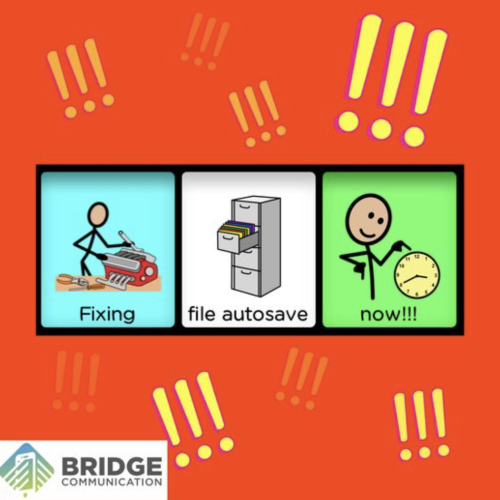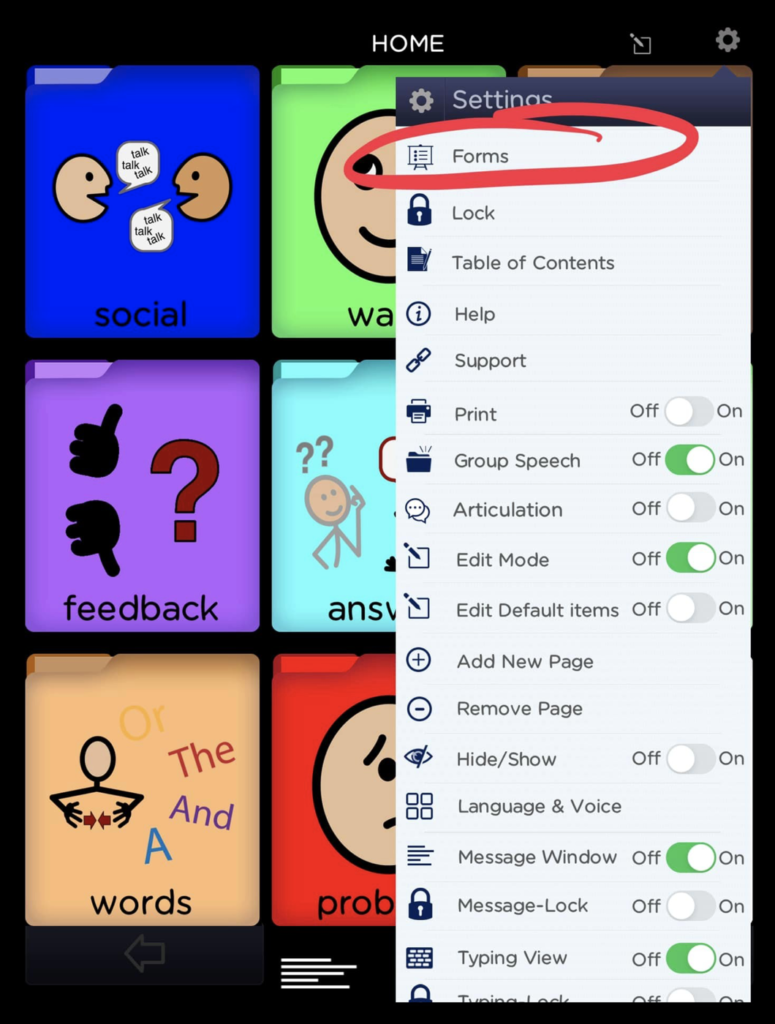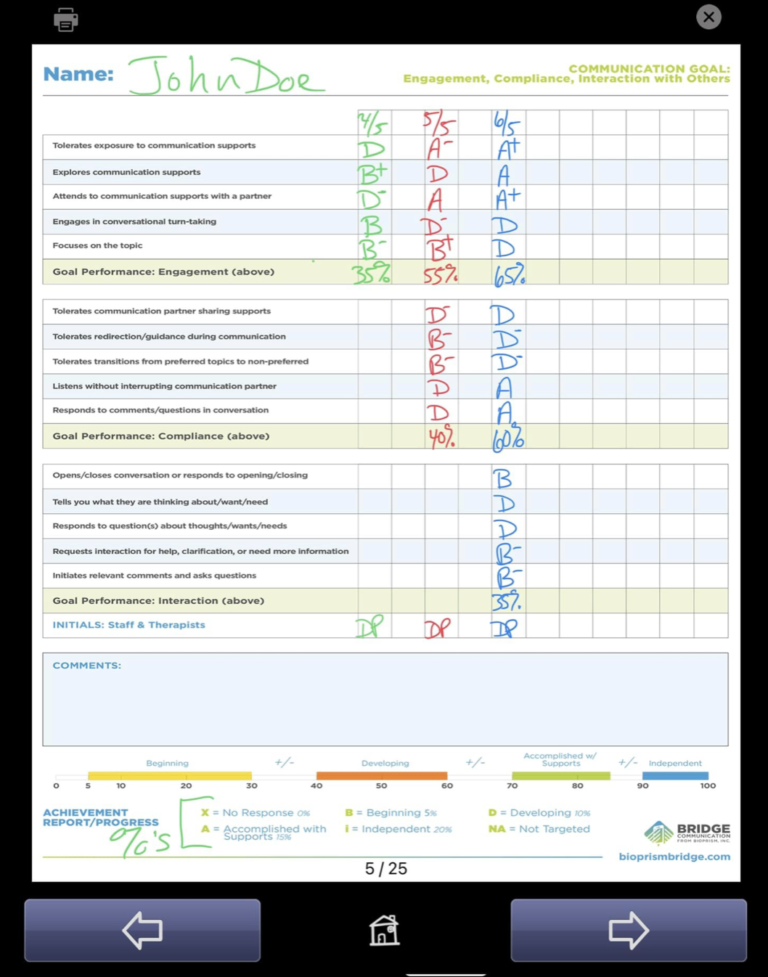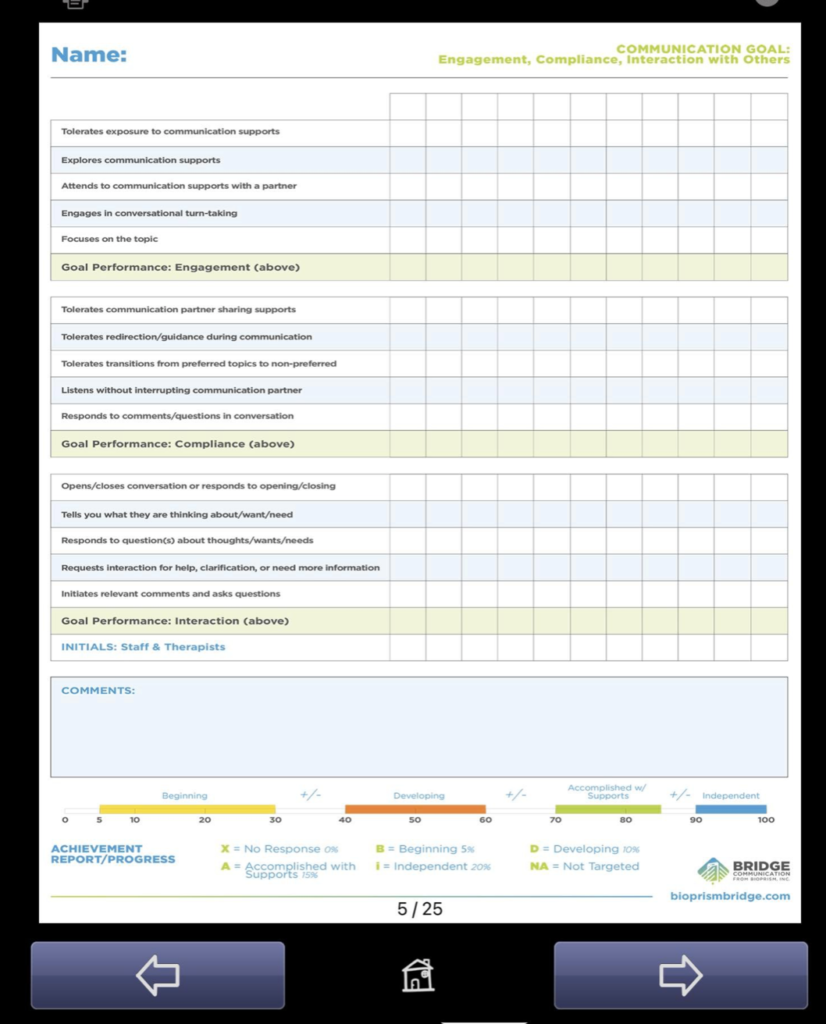From Nonverbal to Verbal
There are many steps to go through to help individuals move from being nonverbal to verbal. I’ve done this many times as a therapist, fortunately, but exponentially once we got our app “right” and were able to present information concisely with targeted focus on attending to language understanding and use.
Supporting the foundation of focus was mentioned in our blog, 2 blogs ago, along with goals I use systematically to attain the base of what is expected during communication and language learning opportunities.
After that, I target a variety of goals involving a <2 second rate of response, understanding and using varied vocabulary within words groups, understanding and using the 6+ parts of speech, the ability to repair conversations, asking for help or stating a lack of understanding, expanding word combinations, asking questions for permission versus commanding requests, and using conjunctions, prepositional phrases, and articles.
The list continues to go on from there with a basis in emotional regulation keeping in mind that anyone speaks, generally, either 1) emotionally or 2) in something I call “linear” language. It’s very difficult to speak strongly emotionally while also maintaining logic and lack of bias or potential misinterpretation of events. If we keep those we are supporting in a more linear, less emotional, more emotionally regulated language state, the body and system stays calm and more learning occurs. More learning = More growth.
Thus, enter our incredible app 🥰. This is how our app differs from others and why our app works. It’s also why I’ve had SO many kids learn to talk from using this app, versus other products on the market we had prior to this app. The systems we were using overloaded us all. Things have changed a lot over the years, but 8 years ago, our app is what we choose, unanimously, and where we all stayed, and the results have been nothing short of amazing!
I enjoyed taking these 2 Message Window video recordings today in therapy with mom and dad’s permission of their two adorable angels. RiverLee and Molly are both autistic, and they both started out with me as nonverbal students that needed my AAC speciality help in the school district I was contracting with. Neither River nor Molly spoke at all until after age 6, and Molly has a significant apraxia diagnosis as well. Her teacher allowed her to sit with headphones on in her classroom each day and practice imitating words on our app. She LOVED it!
The pace of the app may seem slow to us, but have you ever tried to learn a new language at a very fast pace? It’s zero fun. Our app is programmed to slow the overall pace, intentionally. You can combine words in the Message Window in any way you want. There is no wrong way to expose and support language. Neither of these kids need each and every word detailed for them. Kids typically learn “grammar” naturally and with our app and our style of teaching, our kids do the same. We have worked hard on conjunctions and prepositional phrases though, and are targeting articles more with Molly now as River has done well with it and uses these features in speech more naturally each day.
Everyone can see the progress, and in turn, confidence soars. Food for thought, in our opinion, “grow and flow” is always naturally at your fingertips with a calm, stable, and slower paced base.
Keep growing ~ keep flowing.
~ Danielle




